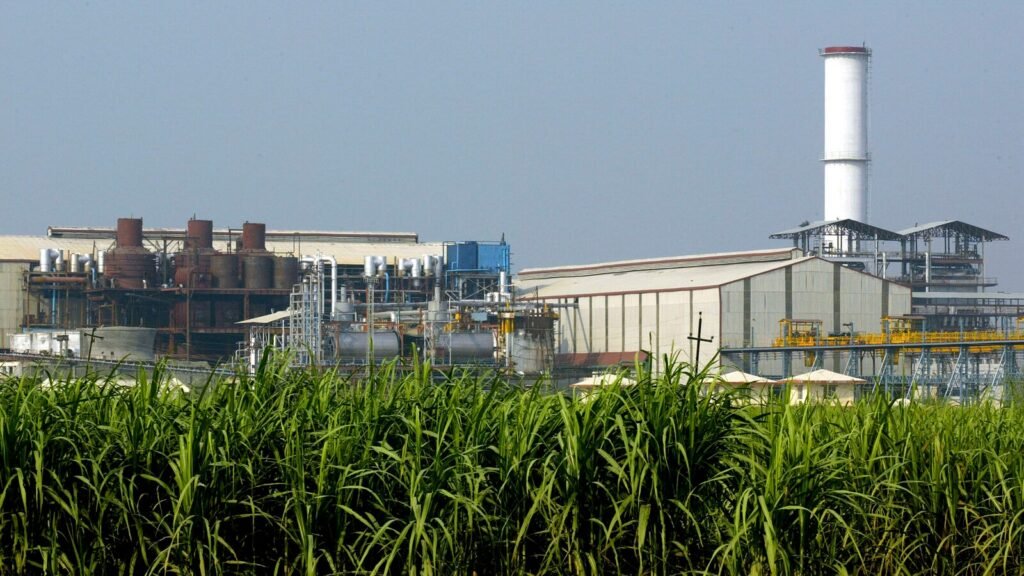Ethanol blending: The good, the bad and the googlies

That ethanol blending programme helped India achieve some significant milestones on the road to its energy security goals earlier this year. By blending ethanol—a biofuel made from sugarand grains—with petrol, the country has saved over ₹1 trillion in fuel imports since 2014. According to the petroleum ministry, the share of ethanol blending in petrol had touched 15% as of September and India is on course to achieve a 20% blending target by next year.
The ethanol blending programme has burnished India’s green credentials and saved precious foreign exchange by reducing carbon dioxide emissions in the transport sector by 54 million tonnes (mt), substituting 18mt of imported crude oil. Reducing carbon emissions is critical to India achieving its net zero emissions target by 2070.
There have been other benefits too. Over the past year, the push to manufacture ethanol has benefited growers of maize, fetching them prices higher than government announced support prices.
India’s experience takes a leaf out of Brazil, which mandates a 27% blending of ethanol with regular fuel. Brazil took to ethanol way back in the 1930s to divert excess production of sugar. The big push came in the 1970s when an oil price shock rocked the world. Now, most cars in Brazil are flex-fuel vehicles that can run on any fuel mix: from zero to 100% ethanol.
Interestingly, India took the lead in setting up the Global Biofuel Alliance last September, during its G20 presidency. The Alliance is a coalition of governments, including Brazil and the US, to drive the development and adoption of biofuels.
View Full Image
There is little doubt that India has moved swiftly in its goal of ethanol adoption. Last August, carmaker Toyota unveiled a fully ethanol-powered flex-fuel vehicle that can also run as an electric vehicle (the car is yet to open for commercial sales). Most car makers have already launched E20-compliant vehicles—the deadline for full compliance is April next year.
At the Delhi Bio-Energy Expo last month, petroleum minister Hardeep Singh Puri said that E20 fuel—petrol blended with 20% ethanol—is now available at 15,600 retail outlets across the country while E100—100% ethanol—is available at 400 retail outlets (only certain two-wheeler models can run on E100).
Despite these early successes, the ethanol sector faces a crisis. Grain-based ethanol manufacturers complain that the unavailability of feedstocks such as rice and maize at viable prices has pushed them into losses. This could lead to defaults on bank loans, they have warned.
Besides, the diversion of maize, an input for poultry feed manufacturers, has driven feed prices higher. Consequently, the poultry industry has demanded duty-free imports of maize and allowed genetically modified (GM) maize imports. India, once a net exporter, is now importing maize.
In the long term, experts say, how much ethanol will be produced from sugarcane, maize or rice will be critical factors. This is because crops such as rice and sugarcane are watered by diesel-powered pumps. These crops also use subsidized inputs, including fertilizers and free electricity, which come with their own energy needs and carbon emissions.
In addition, the diversion of rice and maize to grow ethanol can prove to be difficult during periods of high food inflation. Adverse climate shocks often impact food production and raise prices. During such periods, ethanol manufacturers are likely to face a supply crunch as the government restricts the diversion of food crops to produce biofuels. The transition to E20 may not be a smooth ride for all players.
‘Strategic opportunity’
India set up the first ethanol programme back in 2003 with a goal of 5% blending. The major push came in the summer of 2018 when it notified a National Policy on Biofuels and set the target of 20% blending by 2030. The target date was later advanced to 2025.
For a road map, an inter ministerial committee was set up under Niti Aayog, the federal think tank, which submitted its report in 2021. As per estimates from the report, India would need to produce 13.5 billion litres of ethanol by 2025, of which 10.2 billion will be needed for ethanol blending and the rest for other uses. To produce this quantity of ethanol, 6mt of sugar and 16.5mt of grains will be required every year.
Domestic biofuels offer a strategic opportunity to reduce the dependence on imported fossil fuels in view of the future increase in vehicle numbers and rising demand for fuel, the Niti Aayog report said. Noting that a successful E20 rollout can save India ₹30,000 crore in imported fuel every year, the report added that ethanol is less polluting and offers equivalent efficiency at a lower cost than petrol. However, higher blending of ethanol is yet to lower fuel prices for motorists.
Niti Aayog’s road map presumes “availability of large arable land and rising production of sugarcane and grains leading to surpluses” to support the transition to biofuels. But currently, the supply of feedstock at viable prices has turned out to be an Achilles heel for manufacturers.
Default risk
Data from the department of food and public distribution shows that by end-September, India’s ethanol production capacity had expanded to 16.5 billion litres, higher than the 10.2 billion litres required for E20 blending. A slew of incentives—interest subsidies on term loans, moratorium on loans for a year, and an assured market for ethanol—led to investments in grain-based ethanol plants, and their annual production capacity now stands at 7.1 billion litres.
Data from the Grain Ethanol Manufacturers Association (GEMA) show that in the first 11 months of the ethanol supply year 2023-24, 3.34 billion litres of ethanol was manufactured from grains such as rice and maize, higher than the 2.51 billion litres manufactured by sugar mills. The ethanol supply year runs from November to October.
Due to the high price of rice and maize, grain-based manufacturers are supplying ethanol to oil marketing companies at a loss of ₹8-9 per litre, said C.K. Jain, president of GEMA. According to Jain, due to the limited availability of rice as a feedstock, manufacturers were forced to use maize, which is a costlier input. Shutting down is not an option as losses are higher due to manpower costs, financing (of debt), and penalties imposed by oil marketers for not honouring supply contracts.
“Without an assured supply of feedstock, manufacturers may soon start to default on loans. An estimated ₹20,000 crore of term loans from banks are at stake. The government should supply rice from public stocks at a lower price,” Jain said.
An estimated ₹20,000 cr of term loans from banks are at stake. The government should supply rice from public stocks at a lower price.
— C.K. Jain
In August, the government allowed the Food Corporation of India (FCI) to sell 2.3mt of rice at a floor price of ₹28 per kg. But manufacturers say that after adding the cost of transportation and labour, using this rice to make ethanol is not economically viable. For FCI, the economic cost of rice is ₹39 per kg, which includes the cost of payment to farmers, milling, transport and storage.
Currently, the price of ethanol is fixed depending on the feedstock. It varies between ₹56 and ₹66 per litre for ethanol produced from sugarcane juice and molasses, ₹72 per litre for maize, and ₹64 for rice.
The maize problem
The ethanol blending scheme allows only damaged and surplus rice to be used for the manufacture of ethanol. In recent years, the government has restricted the use of rice when uneven rains hit production.

View Full Image
In a country like India, where undernutrition is rampant, using rice to make ethanol at a cost to the public exchequer is certain to raise questions. The average retail price of rice is currently at ₹43 per kg.Mint has reached out to the food ministry with queries but is yet to get a response.
Due to the limited availability of rice, grain-based ethanol manufacturers took to maize, which contributed to 70% of ethanol production in 2023-24. This pushed maize prices higher and turned India into a net importer for the first time in decades. Wholesale maize prices shot up by 14% year-on-year in August. In 2024, traders estimate that India could end up importing 1mt of maize.
India grows about 36-37mt of maize every year, and the bulk of it is used as poultry and cattle feed (60%). The rest is used as industrial starch and in food processing (over 20% of production), with the rest going to direct consumption. In the ongoing ethanol supply year, grain-based manufacturers used 5.5mt to make ethanol, squeezing the market and driving prices higher. This has hit the profitability of poultry and feed manufacturers.
According to Ranpal Dhanda, president of the Poultry Federation of India, feed prices have shot up by more than 20% in a year, while broiler chicken prices haven’t. So, poultry farmers are losing ₹20 per kg of live birds sold in the market. “Current production of maize is not sufficient to meet the demand from poultry feed and ethanol users, and even a small shortage can drive up prices. So, we have requested the government to allow duty-free imports,” said Dhanda.
“In the long term, to improve productivity, the government should consider allowing genetically modified, high-yielding maize to be grown in India,” Dhanda added. He noted that poultry meat and eggs are the most affordable sources of protein, and should not have less priority than biofuels.

View Full Image
Constrained by low yields, there is likely to be a trade-off between the feed (mainly poultry) and ethanol sectors considering India’s limited production of maize, said Shweta Saini, agricultural economist and CEO at Arcus Policy Research, Delhi. “Maize is obviously a better choice for ethanol production compared to rice because it requires less water to grow. For now, despite a bumper crop forecast, maize prices are likely to stay high due to aggressive demand from multiple sectors.”
Calculating emissions
There is little doubt that using ethanol can reduce emissions in the transportation sector. But the government estimates of 54mt lower carbon emissions need to be balanced with the emissions incurred while producing feedstock crops. Sugarcane and cereals use groundwater, which is drawn by pumps run on diesel or free electricity (produced by burning coal).
In addition, crops require fertilizers, which are heavily subsidized, and pesticides. However, there is no study available in the Indian context on the lifecycle emissions of these crops and how they compare with the direct emissions reduction from using ethanol.
Estimates of 54mt lower carbon emissions need to be balanced with the emissions incurred while producing feedstock crops. Sugarcane and cereals use groundwater, which is drawn by pumps run on diesel or free electricity.
The focus so far has been on first-generation ethanol using sugars in energy-intensive crops to produce biofuels, said Karthik Ganesan, fellow and director at the Council for Energy, Environment and Water, a Delhi-based think tank. “It’s time to explore the possibilities of second-generation ethanol produced from agricultural waste, which can lower the carbon footprint of ethanol.”
Agricultural waste includes paddy stubble, and every winter, the noxious vapours emitted by farmers in Punjab and Haryana burning it leave millions of people in Delhi and the National Capital Region gasping for breath. If it can be used to produce ethanol, perhaps that needless health and environmental crisis can be history, just like the protests by sugarcane farmers of old.











